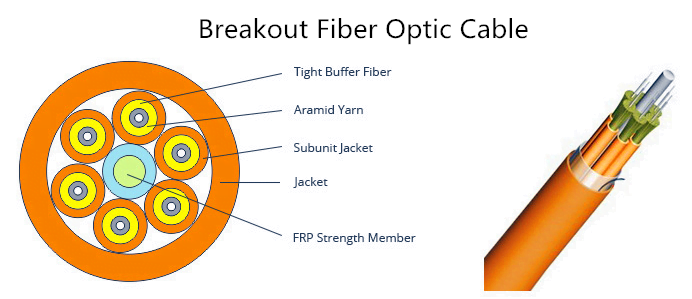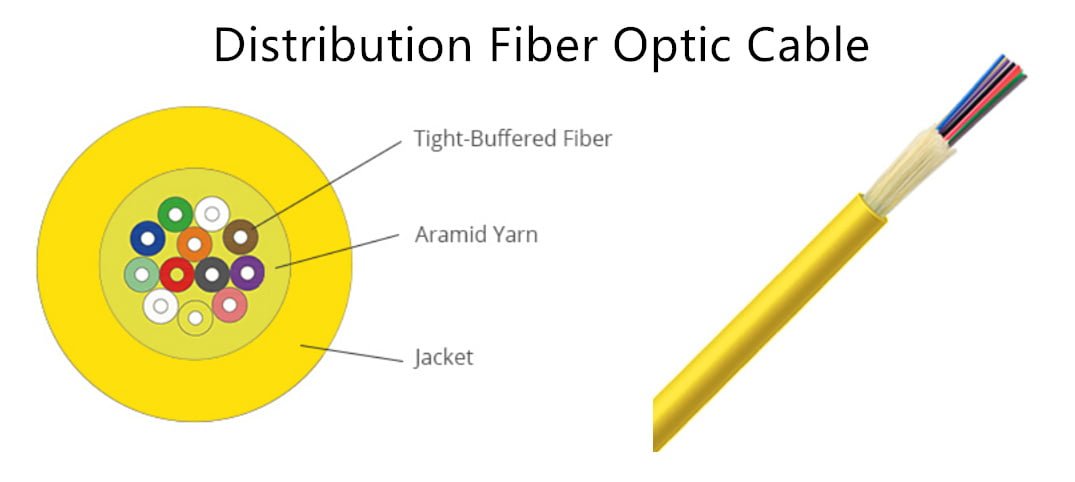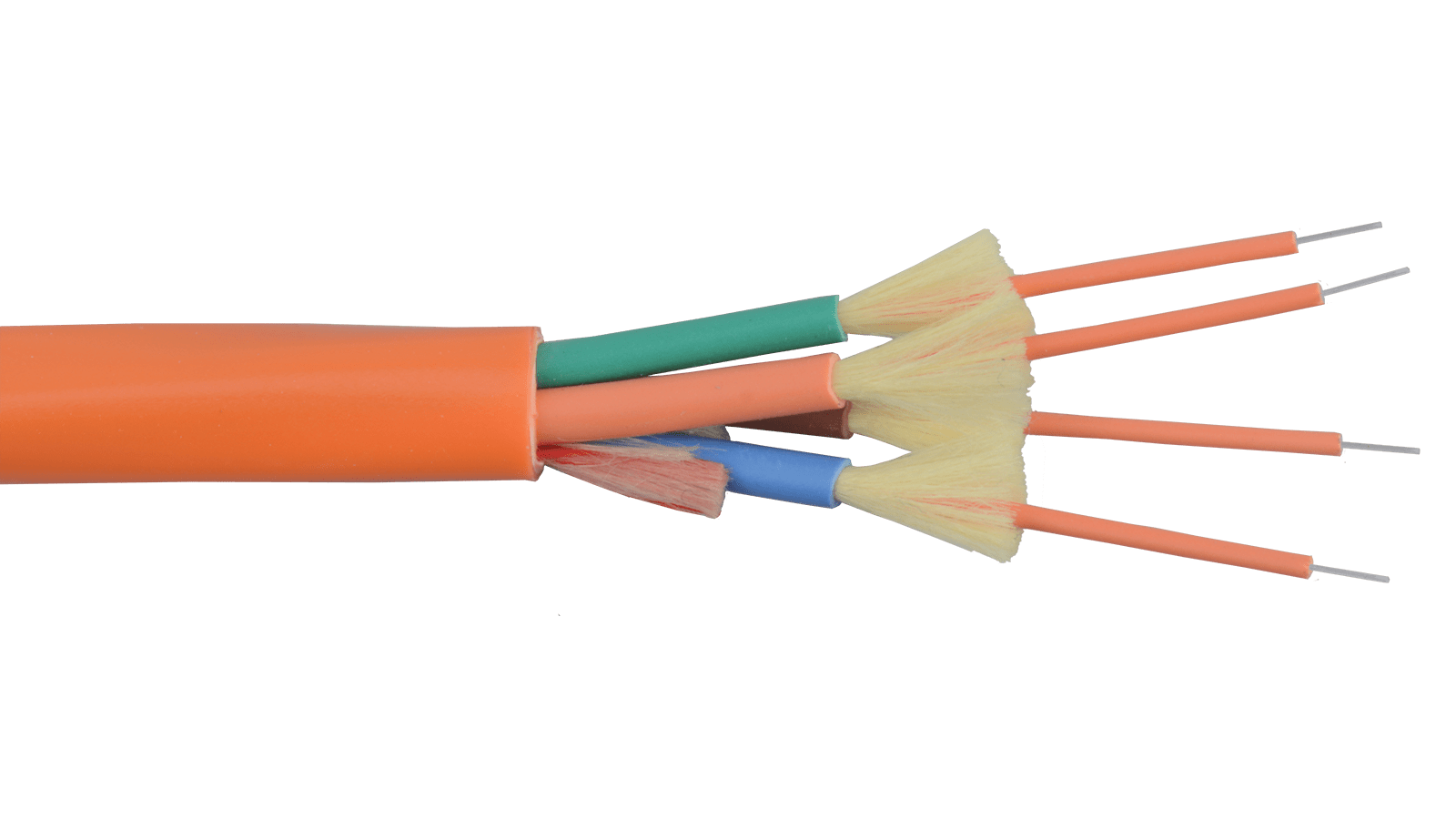Breakout or Distribution Cables — Which One to Choose?
Cables with multiple fibers are widely applied to high-density indoor or outdoor installations. Breakout and distribution fiber optic cables are the commonly used types. However, people may mix them together because they have a similar outer appearance. Actually, the inner structure of these cables is totally different. In this article, some differences between breakout cables and distribution cables will be discussed.
Structure of Breakout Cables and Distribution Cables
Breakout Cables Structure
The breakout cable is also known as fan-out cable. As the following picture shows, breakout cable consists of two or more simplex cables bundled around a central strength member. Each fiber has its own jacket and all of the fibers are packaged together inside the same outer jacket. Thus, breakout cable can also be broken out into individual simplex cables for separate use when running through walls of a building. The breakout cable is usually designed with tight buffer and the fiber counts are varied from 2 to 24 fibers.

Distribution Cable Structure
Unlike the breakout cable, distribution cable is smaller in size and lighter in weight. Fiber counts of distribution cable can be more intensive than the breakout cable for up to 144 fibers. Many fibers may not be used immediately but can be left for future expansion. Although the distribution cable has a more compact design, the tight-buffered fibers inside the cable are only bundled in a single outer jacket for protection, as shown in the picture below. Yet this has made the distribution fiber optic cable to be easily handled and stripped for field termination.

Cable Types
Types of Breakout Cables
According to different fiber ratings, breakout cable can be divided into breakout riser cable and breakout plenum cable. Breakout riser cable is widely used for vertical riser and general horizontal applications. However, when the cable is needed for ducts, plenums and other spaces with environmental air returns, breakout plenum cable is the better choice.

Types of Distribution Cable
Likewise, distribution cable also has the riser and plenum cable types for riser and plenum spaces deployment. Apart from these types, distribution cable is sometimes equipped with the armored jacket for a stronger protection. Armored distribution riser or plenum cable can be applied to harsh premise environments where heavy-duty protection is required.

Cable ApplicationsBreakout Cable Applications
Breakout cables may end up in communication closets, and users can manually change connections. It is also available to be used for direct connection to the device. Moreover, breakout cable is suitable for short riser or plenum areas and conduit runs, where a very simple cable run is planned to avoid the use of splice box or spliced fiber pigtails. Since breakout cable has a stronger design, it is ideal for industrial applications where ruggedness is needed.
Distribution Cable Applications
Distribution cable is typically used for fast installation and easy termination of outdoor and indoor applications. It supports high performance networks and its single-unit fiber design saves much space. Distribution cable usually ends up at patch panels or communication closets, where they are connected with devices for communications between separate offices or locations. Distribution cable is also used within buildings to provide high-density connectivity for applications of intra-building backbones, routing between telecommunications rooms and connected cables in riser and plenum environments.
Conclusion
In summary, it is a convenient solution to use breakout cables or distribution cables for multi-fiber applications. Certainly, when you have to make a choice between them, you also need to consider the price factor. Breakout cable is generally stronger and larger than the distribution cable, thus the cost will be more expensive. Be sure to have a second thought before making the decision.
